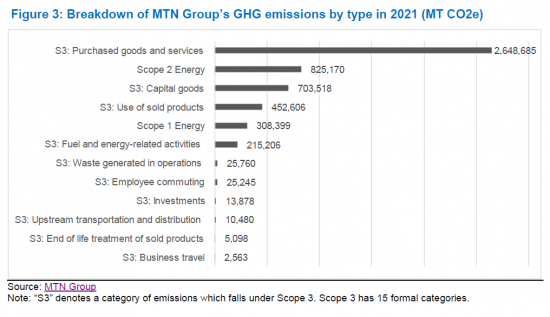 |
市場調查報告書
商品編碼
1168240
電信公司實現其氣候目標所需的供應商支持:供應鏈佔大部分典型電信公司碳足蹟,只有它響應才是通向淨零未來的積極途徑Telco Climate Goals Require Vendor Support: Supply Chain Accounts for Over Half of Typical Telco's Carbon Footprint, Tackling This is Only Way to Support a More Aggressive Path Towards a Net Zero Future |
||||||
本報告聚焦於供應鏈在全球電信行業碳足跡減排中的作用,我們從三個階段分析了目前的排放情況、當前問題、未來的對策和影響等)
來自文本中的圖表

氣候變化的前景逐年惡化,其影響也越來越明顯。 應對酷熱嚴寒、防汛抗洪、應對極端天氣事件、居民搬遷、建築物加固等社會付出的代價是顯而易見的。 但各國政府繼續努力尋找共同點,應對氣候變化的自願私人行動往往是口頭上的服務,而不是實際行動。 網絡運營商領域也不例外。 雖然有一些傑出的運營商,但大多數運營商在減少碳足跡方面持保守態度。 對於運營商來說尤其如此。 降低能源消耗對底線有直接影響,因此很容易受到關注,但對可再生能源的投資不太受歡迎。 更重要的是,大多數電信公司才剛剛開始關注間接排放(範圍 3),其中大部分與其供應鏈有關。 但轉折點已經到來。 電信公司需要成為積極減少碳足蹟的領導者,這將直接影響他們與供應商的互動方式。 少數運營商已經在採購過程中量化其供應商的環境績效,更多的運營商將以更嚴格的標準這樣做。 聯合審計合作委員會 (JAC) 等組織可能會推動這一進程。 供應商也需要做好準備。
分析範圍
公司分析
|
|
內容
- 概覽
- 電信運營商佔網絡運營商業務用電量的大部分
- 範圍 3 排放:概述
- Scope3 案例研究:Swisscom 和 MTN Group
- 供應鏈佔各電信公司總排放量的 50-80%
- 電信公司當前的氣候目標與採購之間的關係
- 對採購的影響
This brief report addresses the role of the supply chain in telco efforts to reduce their overall measured carbon footprint across Scopes 1 (direct energy), 2 (electricity purchases), and 3 (upstream and downstream value chain).
VISUALS

With each passing year, the outlook for climate change worsens and its impact becomes more tangible. Costs are now clearly visible as society pays more to cope with extreme heat and cold, protect against flooding, clean up after abnormal weather events, relocate populations, reinforce structures, and many other measures. Yet national governments continue to struggle to find common ground, and private, voluntary action to cope with climate change is often more about lip service than real action. The network operator sector is no exception. While there are some standouts, most operators are embarrassingly conservative in their approach to carbon footprint reductions. That's especially true for the telco sector. It's easy to focus on reducing energy consumption, as it has a direct impact on the bottom line, but investing in renewable energy is harder to support. More important, most telcos are just beginning to focus on their indirect (Scope 3) emissions, the bulk of which relate to their supply chain. The tipping point has arrived, though. Telcos need to become leaders in aggressively reducing their carbon footprints, and that will have a direct impact on how they engage with vendors. A small number of telcos already quantify the environmental performance of their suppliers within the procurement process; that will grow, and standards will become more stringent. Organizations like the Joint Audit Cooperation (JAC) will push this along. Vendors need to get ready.
COVERAGE
Companies mentioned:
|
|
Table of Contents
- Summary
- Telcos dominate power consumption within network operator business
- Scope 3 emissions overview
- Scope 3 examples: Swisscom and MTN Group
- Supply chain accounts for 50-80% of total emissions for many telcos
- Telcos' current climate goals and the relationship to procurement
- Implications for procurement
List of Figures and Tables
- Figure 1: Overview of GHG Protocol scopes and emissions across the value chain
- Figure 2: Breakdown of Swisscom's GHG emissions by type in 2021 (MT CO2e)
- Figure 3: Breakdown of MTN Group's GHG emissions by type in 2021 (MT CO2e)
- Figure 4: Purchased goods and services plus capital goods - total contribution to carbon footprint
- Table 1: Climate goals and procurement practices for select telcos













